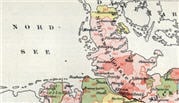Source Information

About Ravensburg, Germany, Deaths, 1876-1950
About this collection
This collection contains death records from Ravensburg in Baden-Württemberg, Germany. It covers the years 1876 up to and including 1950. Ravensburg is located in the historic region of Swabia. It lies about 15 miles north of Lake Constance and the German border with Switzerland. Its striking skyline of medieval towers testifies to its history as a free imperial city. The name Ravensburg is closley linked to the internationally known publisher of books, games and puzzles which is headquartered there. A remarkable chapter in the history of Swabia involves the "Schwabenkindern" (Swabian Children). These were groups of poor peasant children who, during the 17th and early 20th centuries, were marched over the Alps each year to serve as migrant workers in Swabia. From 1806 to 1918, Ravensburg was part of the Kingdom of Württemberg which became the Free Peoples State of Württemberg under the Weimar Republic. After the end of Nazi rule, the city came under the French Zone of Occupation. In 1949 it belonged to the the West German state of Württemberg-Hohenzollern which was merged into the the state of Baden-Württemberg in 1952.
Beginning on January 1, 1876, birth, marriage and death records in the former German Empire were created by local registry offices. The collected records are arranged chronologically and usually bound together in the form of yearbooks. These are collectively referred to as "civil registers." Complementary alphabetical directories of names may also have been created. While churches continued to keep traditional records, the State also mandated that the personal or marital status of the entire population be recorded.
What you can find in the records
Death records were created using preprinted forms that were filled in by hand by the registrar. Later, the forms were completed by typewriter. In each record the date of death usually differs from the date it was registered. Depending on the individual form or on the formulations used by the registrar, you may find:
- Sequential or Certificate Number
- Registration Date
- Informant: Occupation, Given Names, Last Name, Maiden Name, Residence, Address
- Deceased: Occupation, Given Names, Last Name, Maiden Name, Age/Birthdate, Denomination, Residence/Address, Birthplace, Marital Status, Spouse/Parents, Place/Date of Death, Time of Death. After 1938, the records may also include a Cause of Death and cross references to corresponding marriage registers.
- Registrars' Signatures
Alphabetical directories of names are included at the end of each register. These are a ordered by the first letter of the last name and provide cross-reference to the record Certificate Number. However, the name directories are not searchable through the search form.
More about using this collection
Each record comprises one page. Additional events from the life of the deceased were sometimes recorded later on in the margins. These notes, sometimes referred to as "narration," can contain very useful information but they have not been indexed. As a result, information from the notes will not found via the search form. The “Informant” was usually a relative of the deceased. In later years death information was often submitted by hospital administrators or funeral directors. War casualties and victims were taken from military records. Those from August 1939 to January 1946 were made available by the "German Office for the Notification of Next-of-Kin of Members of the Former German Armed Forces who were Killed in Action" (WASt) in Berlin. Under "Browse this collection,” select the Year Range of the register desired.
 Need help with the German language? Find resources in our German Research Center.
Need help with the German language? Find resources in our German Research Center.